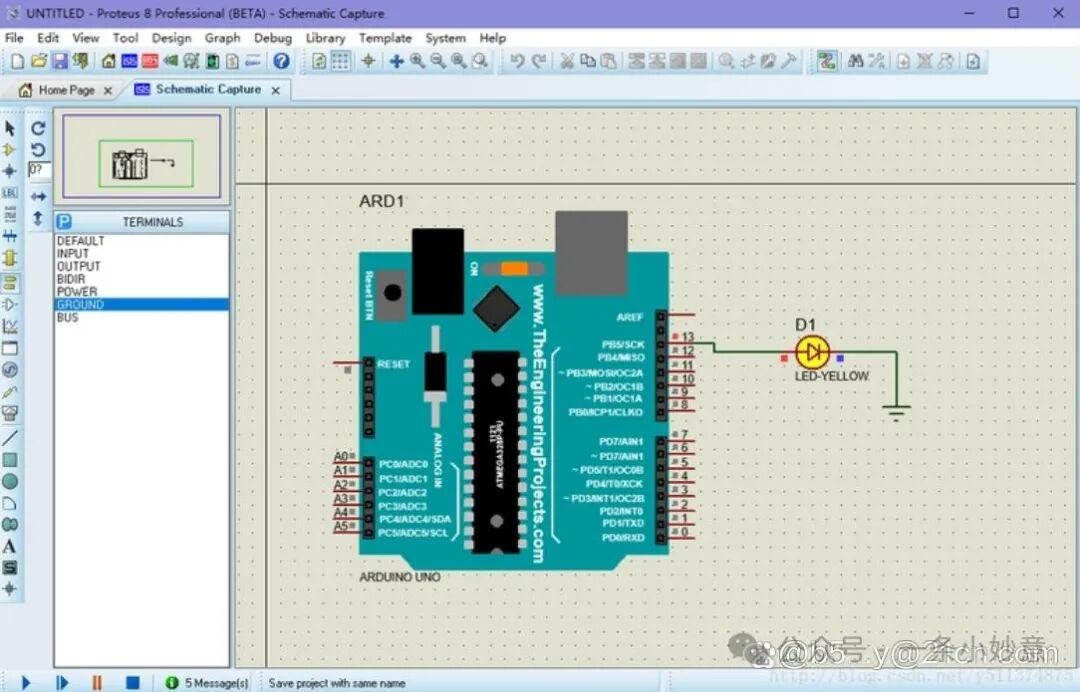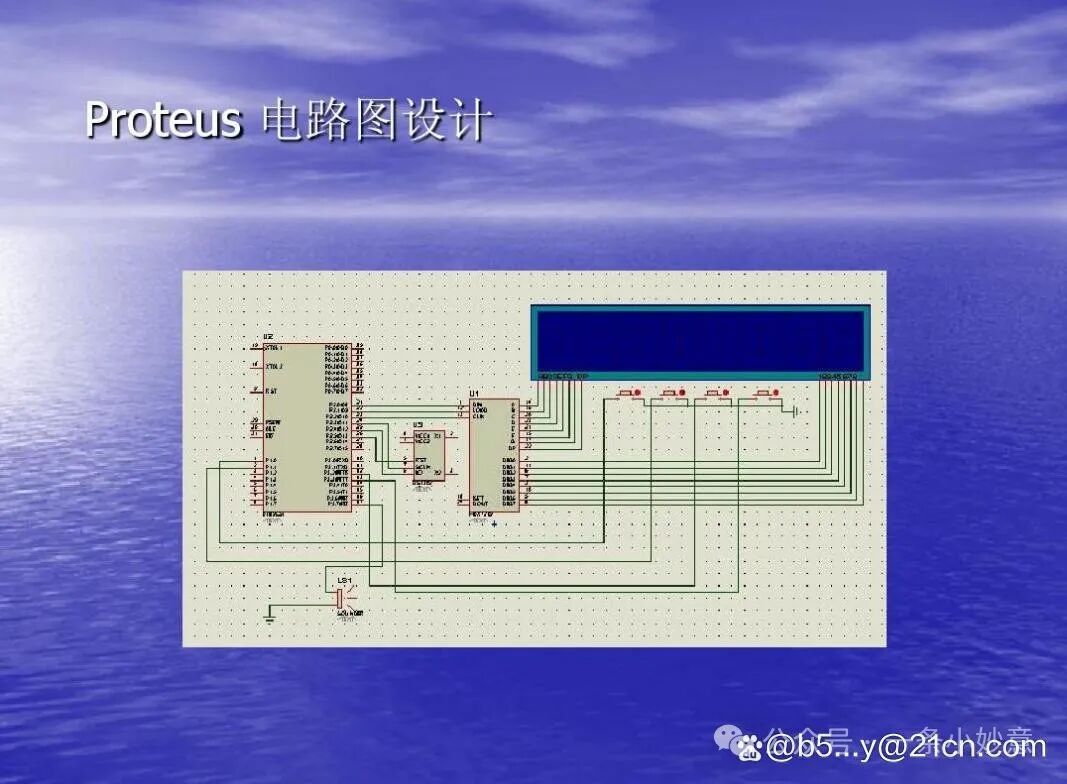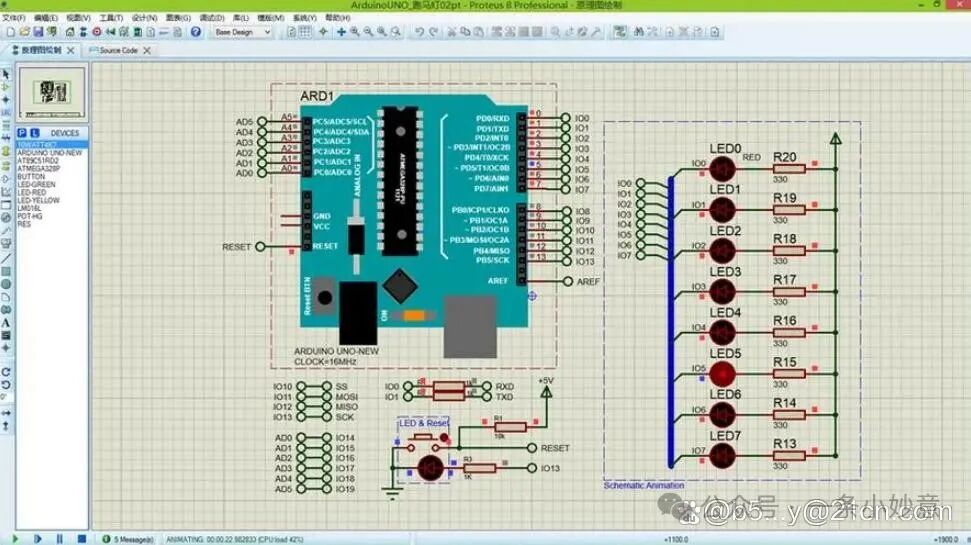Proteus software is a comprehensive tool widely used for electronic circuit design and simulation, developed by Labcenter Electronics Ltd. This software enables a variety of functions including schematic and PCB design, SPICE simulation, microcontroller simulation and programming, and embedded system design, making it a highly practical electronic design software.
When designing circuits, Proteus software provides a range of component libraries, such as resistors, capacitors, transistors, etc., allowing users to easily drag these components onto the canvas for circuit design. Alternatively, users can import component libraries for more complex circuit designs. During circuit simulation, the software can analyze the designed circuit diagram and simulate the operational state and characteristics of the circuit. Users can also export simulation data to HTML, CSV, or SPICE format files for easy viewing and analysis.
Additionally, Proteus software can be used for microcontroller simulation and programming, allowing users to upload their C code or assembly code to the simulation engine for circuit simulation and testing. This enables users to easily debug microcontroller programs, conduct thorough testing, and save time and costs in prototype development.
Overall, Proteus software is an essential tool in electronic circuit design, featuring comprehensive functionality, ease of use, and accurate simulation results, making it very practical for electronic engineers and students.

Software Address: 【 haszj.top 】

Introduction to Proteus Software Usage Tips
Proteus is a commonly used electronic circuit design software, widely applied in the field of electronic engineering. If you are a beginner or just starting to use this software, this article will introduce some usage tips for Proteus, helping you to conduct electronic circuit design more easily. In the following sections, we will introduce the usage methods of Proteus based on different themes.
-
How to Properly Draw Circuit Schematics
-
In Proteus, drawing circuit schematics is the first step in circuit design. However, drawing circuit schematics requires certain skills. First, when drawing circuit schematics, different components should be arranged under different categories for easy searching. For example, group all power components together and all sensor components together. Secondly, when drawing circuit schematics, the number of crossed lines should be minimized. This not only makes the circuit schematic look neater but also reduces the probability of connection errors.
2. How to Perform Simulation Analysis
One of the biggest features of Proteus is its ability to perform simulation analysis. There are some tips that can help us better conduct analysis during simulation. First, before performing simulation analysis, a basic check of the circuit should be conducted. For example, check whether the components in the circuit are placed correctly and whether there are any connection errors. Secondly, during simulation analysis, relationships can be added to components to control the simulation results. For instance, adding a switch to a light bulb can control the on/off state of the bulb. Finally, when performing simulation analysis, attention should be paid to the simulation time range. Sometimes, if the simulation time is too long, it may slow down the calculation speed.
3. How to Properly Use PCB Editing Tools
When performing PCB routing, there are some tips that can help us better edit. First, we can group different components for easier routing. For example, group all power components together and all sensor components together. Secondly, when performing PCB routing, avoid selecting lines that are too thick. Lines that are too thick can easily lead to short circuits and other errors. Finally, when performing PCB routing, one principle to keep in mind is to minimize the length of the routing as much as possible.
4. How to Use Proteus’s Graphics Library
The graphics library in Proteus is a very useful feature that helps us quickly find the components we need during circuit design. When using the graphics library, there are some tips that can help us use it better. First, the graphics library can be divided into different categories. For example, group all power components together and all sensor components together. Secondly, when using the graphics library, the search function can be utilized to quickly find the required components. Finally, when using the graphics library, it is important to select appropriate components to ensure the accuracy of the circuit design.
5. How to Design Custom Components
In Proteus, we can design custom components to meet our specific needs. When designing custom components, there are some tips that can help us design better. First, we should clarify the requirements for the custom component and design according to those requirements. Secondly, when designing components, we should follow drawing specifications to ensure the accuracy of the components in the circuit. Finally, after completing the design of the custom component, testing should be conducted, and the test results should be analyzed and evaluated to ensure the reliability of the component in practical applications.
The above is an introduction to the usage tips of Proteus software, hoping to assist you. By learning these tips, you can operate more easily during circuit design and improve design efficiency. Of course, to become an excellent circuit designer, continuous learning and practice are necessary. I wish everyone success on their journey in electronic circuit design!
